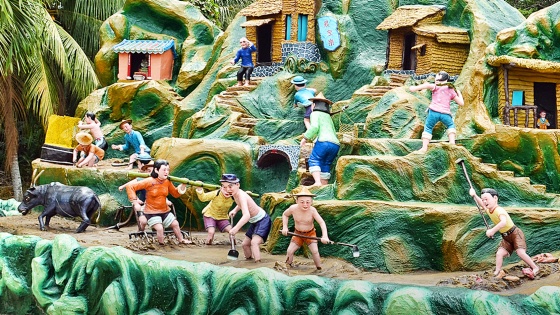
Overview
Haw Par Villa, also called Tiger Balm Gardens, is definitely an legendary theme park situated in Singapore. This special attraction offers people a glimpse into Chinese mythology and folklore via its breathtaking and intricate statues, dioramas, and exhibits. Let us take a more in-depth look at the important aspects of the fascinating place.
History:
Haw Par Villa was originally crafted by Aw Boon Haw, the magnate powering the well known Tiger Balm ointment. The park opened its doorways in 1937 as a way to the two entertain and teach people today about standard Chinese values, heritage, and beliefs. Through the many years, it's gone through various renovations but has managed to keep its original charm.
Mythological Figures:
One of several most important highlights of Haw Par Villa is its vast collection of statues depicting characters from Chinese mythology and legends. Site visitors will encounter figures like Journey on the West's Sun Wukong (the Monkey King), 8 Immortals from Daoism, together with significant deities for example Guanyin (Goddess of Mercy) and Buddha Shakyamuni.
Concept Parks in just Haw Par Villa:
Inside of Haw Par Villa by itself are various unique spots or sections:
Ten Courts of Hell: Potentially one of the most intriguing parts of Haw Par Villa is exploring "The 10 Courts of Hell." In this article readers can witness graphic scenes depicting punishments for many sins dependant on common Chinese beliefs about afterlife retributions.
Taoist-Mythology Sculptures: This space showcases spectacular sculptures depicting stories from ancient Taoist myths. These vivid artworks convey to lifetime tales which were passed down as a result of generations in vivid depth.
Backyard garden Sceneries: Past mythological sculptures lie serene gardens full of picturesque landscapes adorned with beautiful bouquets and plants—a wonderful Room for visitors to take it easy amidst nature's natural beauty or get pleasure from a casual stroll.
Teochew Opera Centre: The Teochew Opera Centre is a conventional theater setting that on a regular basis hosts performances from the Teochew opera, an important kind of Chinese musical drama with distinctive regional qualities in its costumes, new music, and storytelling.
Cultural Significance:
Haw Par Villa retains huge cultural importance as it offers an opportunity to examine different areas of Chinese culture, folklore, and religious beliefs. It serves as both of those an open-air museum plus a spot for communal actions like festivals or academic courses enabling site visitors to realize insights into historic Chinese traditions.
Moreover, the park's initial intention was to coach guests about moral values by vivid depictions of heaven and hell – rewarding virtue and condemning vices. Hence Haw Par Villa functions as don't just an amusement park but also a moral guidebook instructing vital moral concepts from classic Chinese philosophy.
Modern day Relevance:
Inspite of being constructed decades ago, Haw Par Villa continues to entice locals and travelers alike on account of its uniqueness and timeless attractiveness. The park has managed to Mix tradition with up to date aspects by organizing events such as artwork exhibitions, lantern festivals during mid-autumn celebrations showcasing the fusion between modern aesthetics and classic themes associated with the villa.
Recently, there are actually endeavours by authorities to refurbish portions of the attraction even though making certain its historical authenticity. This ongoing routine maintenance makes certain that Haw Par Villa stays accessible for generations to come though preserving its abundant heritage worth.
Conclusion:
Haw Par Villa stands out among the Singapore's sights for its immersive knowledge into mythical realms through intricately-intended sculptures depicting deities, legends, morality tales and punishments in Taoist mythology-motivated gardenscapes - all inside a reflective environment emphasizing everyday living classes according to compassion revealed in direction of opp haw par villa stn Other individuals as it conveys historical knowledge guided by ethical principles conducive for self-enhancement located amidst wonderful scenic landscapes which makes it acceptable equally for cultural exploration enthusiasts serious about China's large mythology/history/backgrounds/legends simultaneously(proporotinately with owing rverence in the direction of central topic of representing regular Chinese culture and beliefs).
Comments on “Haw Par Villa”